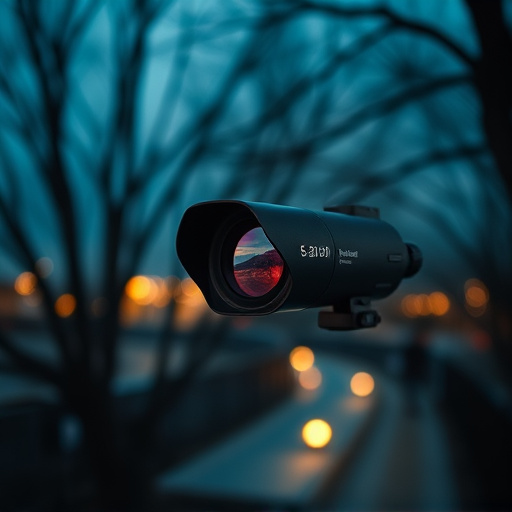In an era of heightened privacy concerns, understanding how to conceal spy cameras is vital. Homeowners can protect their spaces by identifying potential hiding spots within everyday objects and electronics using tools like thermal imaging and RF detectors. Regular inspections, EMI shielding, and secure communication channels strengthen defenses against these hidden threats. A proactive approach, including creative camouflage and staying informed about new technologies, ensures homes remain safe sanctuaries free from covert surveillance.
In today’s digital age, privacy concerns have grown, prompting a closer look at hidden threats like microphone bugs and spy cameras. These invasive devices can compromise your security and personal life. This article explores effective detection techniques for enhancing your home security against such concealed threats. We delve into understanding the risks, providing practical tips on identifying potential bugs, and offering strategies to conceal and prevent spy cameras, ensuring a safer living environment.
- Understanding Microphone Bugs and Spy Cameras
- Detection Techniques for Home Security
- Concealing and Preventing Spy Devices at Home
Understanding Microphone Bugs and Spy Cameras
Microphone bugs, also known as covert listening devices or spy cameras, are a significant concern in modern times. These tiny, often hidden, gadgets can be used to invade privacy and gather sensitive information without the owner’s knowledge. They might resemble everyday objects like clocks, light switches, or even pen drives, making them virtually undetectable. Understanding how these devices work is crucial when it comes to detecting and preventing their use.
To conceal spy cameras, one must consider various methods. This includes identifying potential hiding places—such as walls, ceilings, or even everyday electronics—and regularly inspecting devices for any unusual components. Advanced users might employ electromagnetic interference (EMI) shielding techniques to protect against hidden microphones. Additionally, using secure communication channels and encrypting data can deter would-be spies from gaining access to sensitive information, making it a vital step in the battle against covert surveillance.
Detection Techniques for Home Security
Home security has evolved with advanced technology, and one subtle yet powerful tool in a homeowner’s arsenal is the art of detecting hidden microphones, or bugs. These tiny devices can be concealed within everyday objects, posing a significant threat to privacy. To counter this, several detection techniques have emerged, offering peace of mind for those seeking to protect their personal spaces.
One effective method involves using specialized equipment like thermal imaging cameras and RF (radio frequency) detectors. These tools can help identify unusual heat signatures or electromagnetic emissions that might indicate the presence of a hidden camera. Additionally, physical inspections are crucial; checking for any suspicious devices or cables behind walls or in common hiding spots can reveal concealed spy cameras. How to conceal spy cameras is an art itself, and understanding these detection techniques empowers homeowners to secure their environments.
Concealing and Preventing Spy Devices at Home
To prevent unwanted surveillance, it’s crucial to understand how to conceal spy cameras effectively. Start by conducting a thorough audit of your home, identifying potential hiding spots like corners, behind pictures or mirrors, and inside common appliances. Once identified, employ creative strategies to block these areas. For instance, use reflective surfaces like aluminum foil or one-way mirror film to obstruct the view from various angles. Additionally, strategically place decoy cameras or sensors in plain sight to deter potential intruders from setting up hidden devices.
Regularly updating security measures is key. Stay informed about new spy device technologies and adapt your concealment tactics accordingly. Simple household items can serve as effective barriers; for example, positioning bookshelves closely together or using heavy curtains can make it harder for cameras to capture clear images. By combining these methods, you significantly enhance privacy, ensuring that your home remains a safe sanctuary free from covert surveillance.
Protecting your home from covert listening devices, like microphone bugs and spy cameras, involves a combination of awareness and proactive measures. By understanding common detection techniques and learning how to conceal spy cameras, you can take significant steps towards ensuring your privacy. Remember, the key is to stay informed about potential threats and employ simple yet effective prevention strategies to create a secure living environment. For instance, regularly inspecting electrical sockets, using RF shielding, and installing hidden camera detectors are practical ways to safeguard your home from unwanted surveillance.
